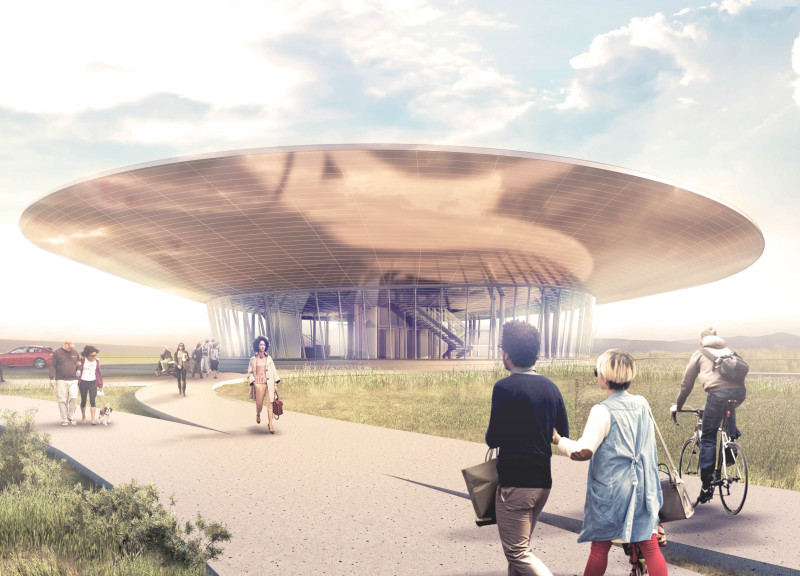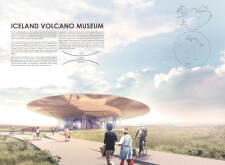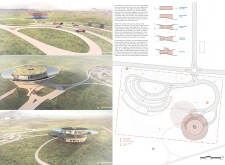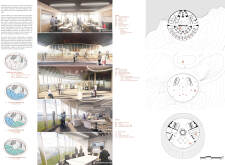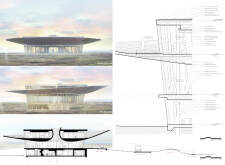5 key facts about this project
Functionally, the museum serves multiple purposes: it is both an educational venue and a community hub. It aims to attract local residents and international tourists alike, facilitating a broad understanding of Iceland's geological phenomena. The design prioritizes accessibility and adaptability, ensuring that diverse groups can engage with the exhibits and the space itself. Elements within the museum are organized to create a logical flow, guiding visitors through various educational displays, interactive installations, and informal gathering areas.
The architectural design features a circular layout, symbolizing the natural forms present in the Icelandic landscape, particularly those shaped by volcanic activity. This design choice promotes a sense of connection with the earth, inviting visitors to reflect on the geological processes that have shaped the region. The structure extends across three levels, with ample use of glass façades that allow abundant natural light to filter into the space and provide panoramic views of the surrounding scenery. This transparency fosters a direct connection between the interior of the museum and the outdoors, enriching the visitor experience.
The materiality showcases an intentional selection of components that resonate with the natural environment. Glass is used extensively not only for its aesthetic qualities but also for its ability to integrate the indoor environment with the breathtaking views outside. The use of metal in roofing and other structural elements introduces a contemporary edge while enhancing durability. Concrete serves as the foundational material, assuring structural stability and resilience. Additionally, wood is incorporated as a warm design element, creating an inviting atmosphere within the museum’s interior spaces.
Unique design approaches can be observed throughout the project. The arrangement of interior spaces reflects a flexible usage model, accommodating everything from intimate gatherings to larger educational events. This adaptability is key, as it allows for the hosting of varied exhibitions and community activities. By incorporating outdoor terraces and observation decks, the design fosters an immersive environment, enabling guests to fully appreciate and engage with Iceland’s unique geological features.
Moreover, environmental sustainability is a priority in the architectural design, with strategic orientation and layout minimizing energy consumption while maximizing daylight exposure. The project demonstrates a commitment to ecological awareness and a deep respect for the landscape, reinforcing the important relationship between architecture and nature.
In summary, the Iceland Volcano Museum encapsulates a commitment to education, community engagement, and environmental integration through a carefully considered architectural design. The project not only highlights Iceland's rich geological history but also serves as a gathering place for visitors and locals alike. For those interested in a deeper understanding of this architectural endeavor, exploring the project presentation can offer valuable insights into the architectural plans, sections, designs, and ideas that have shaped this significant cultural landmark.


